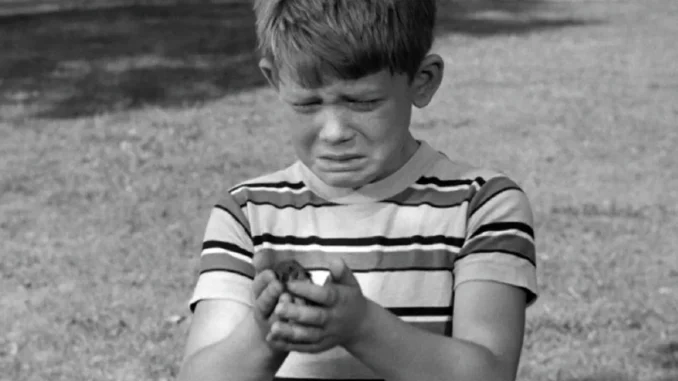
How one emotional half-hour of guilt, birds and fatherhood made ‘The Andy Griffith Show’ unforgettable
The word “memorable” frequently comes to mind when reflecting on The Andy Griffith Show, whether it’s characters like Andy Taylor (Andy Griffith), Barney Fife (Don Knotts), Floyd the Barber (Howard McNear), Otis the Drunk (Hal Smith) or Andy’s son Opie (Ron Howard); the fictional town of Mayberry itself or the show’s overall gentle humor. And, of course, the storytelling that can frequently make you laugh or touch your heart. “Opie the Birdman” does both.
The story is simple, but devastating in its quiet way: Young Opie, playing with his slingshot, accidentally kills a mother bird. When his father discovers what happened, he doesn’t yell or punish his son, who is clearly distraught over what’s happened. He simply opens the window of Opie’s bedroom so he can hear the cries of the orphaned baby birds. The lesson is swift, sharp and incredibly powerful. From there, the boy decides to raise the fledglings himself and, when the time comes, let them go.
Pop culture historian Geoffrey Mark calls it “the perfect storm of acting, writing and directing,” a rare convergence that elevates the episode beyond even the show’s already high bar. “It’s about a father and a son and a father teaching a son about the exigencies of life and responsibility,” he explains. “It’s not a Don Knotts episode, it’s not a Gomer episode, it’s not even Southern. This is a father and son moment.”
A shift in focus

For Andy and Don: The Making of a Friendship and Classic American TV Show author Daniel de Visé, the episode stands out because of its rarity. “There came a point pretty early on where Andy and Barney was the primary relationship on the show,” he notes. “It was almost like Barney was Andy’s kid rather than Opie.”
Even Ron Howard, then just five years old, understood that the show’s focus had shifted away from him, but in “Opie the Birdman,” the spotlight returned, fully and poignantly, to the bond between father and son.



A lesson in restraint

Opie names the birds “Wink,” “Blinken” and “Nod,” a gentle literary nod by Bullock to a Eugene Field poem. And then comes the moment of letting go—Opie releasing the birds and sadly remarking, “Cage sure looks awful empty, don’t it, Pa?” Andy’s reply: “Yes, son. It sure does. But don’t those trees look nice and full?” It’s a line that Mark calls “wonderful”—especially given that it capped the show’s very first crane shot, a cinematic flourish from the birds’ perspective that underscored the power of the scene.
Behind the scenes

It wasn’t just Andy and Opie who had to adjust. Geoffrey Mark notes that series regular Frances Bavier, who played Aunt Bee, wasn’t thrilled about having so little to do in the episode. “She had to be told, ‘This episode isn’t about you, Frances. It’s about Opie this time.’”
Meanwhile, Howard’s performance was carefully nurtured. “They had to specially work with Ron that week to get the performance they wanted,” Mark recalls. Fortunately, Howard—already an amazing young actor—rose to the challenge. “Ron was brilliant and because Dick [Crenna] had been in Ron’s shoes as a child actor, he was able to reach Ron at his level.”
It’s not surprising that when people discuss The Andy Griffith Show, this episode always comes up within the first few minutes. It encapsulates what made the show so enduring: a deep well of compassion, smart writing, strong performances and the ability to tackle emotional material without losing its heart. “Good for Andy—for not overreacting,” says de Visé. “Little boys in the sixties had slingshots, I guess, and they shot at stuff.”
But the genius of “Opie the Birdman” is how it shows a better way. “It’s a Hallmark episode,” says Mark. “Bravo to all the people who were involved.”
